
The Cottidae are a family of fish in the superfamily Cottoidea, the sculpins. It is the largest sculpin family, with about 275 species in 70 genera. They are referred to simply as cottids to avoid confusion with sculpins of other families.
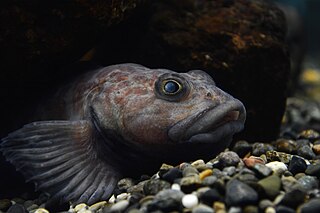
The Abyssocottinae are a subfamily of ray-finned fishes in the family Cottidae, the sculpins. They are known commonly as the deep-water sculpins. The entire subfamily is endemic to Lake Baikal in Siberia.

Agonidae is a family of small, bottom-dwelling, cold-water marine fish. Common names for members of this family include poachers, Irish lords, sea ravens, alligatorfishes, starsnouts, hooknoses, and rockheads. They are notable for having elongated bodies covered by scales modified into bony plates, and for using their large pectoral fins to move in short bursts. The family includes about 59 species in some 25 genera, some of which are quite widespread.

Cottus is a genus of the mainly freshwater ray-finned fishes belonging to the family Cottidae, the typical sculpins. They are often referred to as the "freshwater sculpins", as they are the principal genus of sculpins to be found in fresh water. They are native to the Palearctic and Nearctic.
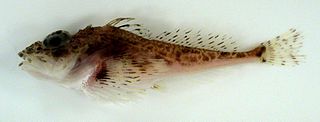
The scaled sculpins, Icelus, are a genus of marine ray-finned fishes belonging to the family Cottidae, the typical sculpins. Most of the fishes in this genus are found in the northern Pacific Ocean but they also occur in the North Atlantic Ocean.

Comephorus, known as the golomyankas or Baikal oilfish, are a genus comprising two species of peculiar, sculpin fishes endemic to Lake Baikal in Russia. Comephorus is the only genus in the subfamily Comephorinae. Golomyankas are pelagic fishes and the main food source for the Baikal seal.

Clinocottus is a genus of marine ray-finned fishes belonging to the family Cottidae, the typical sculpins. They are nearshore benthic fishes native to the northeastern Pacific Ocean. They are mentioned as sharpnose sculpins.

Abyssocottus is a genus of ray-finned fishes belonging to the family Cottidae, the typical sculpins. These sculpins are endemic to Lake Baikal in Russia.
Argyrocottus is a monospecific genus of marine ray-finned fish belonging to the family Cottidae, the typical sculpins. Its only species is Argyrocottus zanderi which is found in the northwestern Pacific Ocean from Japan to the Kuril Islands and in the Sea of Japan. It is found at depths of from 0 to 85 metres. This species grows to a standard length of 9 centimetres (3.5 in). This taxon was first formally described in 1892 by the Russian zoologist Solomon Herzenstein with its type locality given as Korsakov on Sakhalin in the Sea of Okhotsk. The 5th edition of Fishes of the World classifies the genus Argyrocottus within the subfamily Cottinae of the family Cottidae, however, other authors classify the genus within the subfamily Myoxocephalinae of the family Psychrolutidae. although others place the subfamily Myoxocephalinae within the Cottidae.

Enophrys is a genus of marine ray-finned fishes belonging to the family Cottidae, the typical sculpins. These fishes are found in the northern and eastern Pacific Ocean.

Icelinusis a genus of marine ray-finned fishes belonging to the family Cottidae, the typical sculpins. These fishes are found in the northern and eastern Pacific Ocean.
The lavender sculpin is a species of marine ray-finned fish belonging to the family Cottidae, the typical sculpins. It is found in the eastern Pacific Ocean.

Megalocottus is a small genus of marine ray-finned fishes belonging to the family Cottidae, the typical sculpins. These fishes are found in the western Pacific Ocean.

Microcottus is a small genus of marine ray-finned fishes belonging to the family Cottidae, the typical sculpins. These fishes are found in the northern Pacific Ocean.
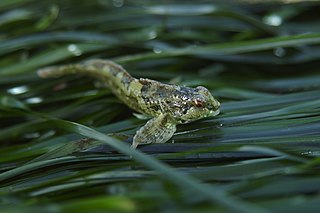
Oligocottus is a genus of marine ray-finned fishes belonging to the family Cottidae, the typical sculpins. These sculpins are found in the northern and eastern Pacific Ocean.

Cottocomephorus is a genus of freshwater ray-finned fishes belonging to the family Cottidae, the typical sculpins. This genus is endemic to Lake Baikal and its surrounding tributaries in Russia. They have relatively large pectoral fins and reach up to 22 cm in total length. They are an important food for the Baikal seal, during the winter second only to the golomyankas.
The stone sculpin is a species of cottoid fish endemic to Russia, where it is found in Lake Baikal and surrounding tributaries as well as the Gramninskie Lakes, Lake Verkhnaya Agata and the Enisei River and various lakes in Tuva. This species is the only recognized member of its genus.
The bighead sculpin is a species of sculpin fish that is endemic to the Lake Baikal watershed in Siberia, Russia. It typically lives on rocky bottoms, often in places with sponges, at depths of 5 to 70 m (16–230 ft), but can occur as deep as 120 m (390 ft). Its colour varies from grayish to brownish or greenish depending on the bottom type. It can reach up to 22 cm (8.7 in) in length, but most are 13–16 cm (5.1–6.3 in). It feeds on a wide range of smaller animals such as young fish, insect larvae, amphipods, molluscs and oligochaetes. Breeding is in the spring where the female lays 618 to 1622 eggs, which are guarded by the male.
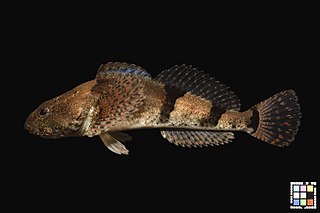
The fourspine sculpin is a species of freshwater ray-finned fish belonging to the family Cottidae, the typical sculpins. It is endemic to Japan. It reaches a maximum length of 30.0 cm (11.8 in).
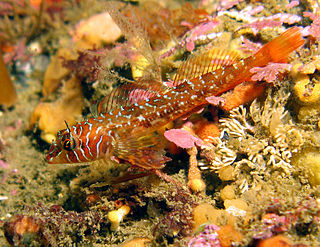
Jordaniidae is a small family of marine ray-finned fishes belonging to the order Perciformes. These fishes are found in the eastern North Pacific Ocean.














